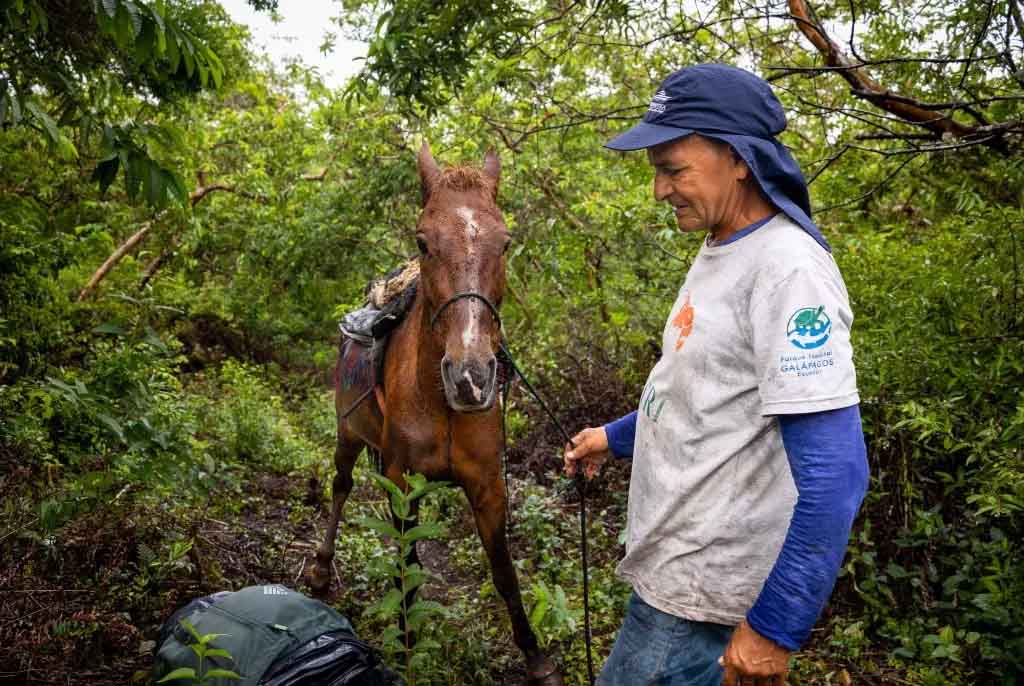The Project
This project achieved a number of significant results, including a comprehensive assessment of introduced predators on Floreana. This research has given us a better understanding of the invasive species that are present on Floreana, more than we had on Santa Cruz. Sonia Kleindorfer of the University of Vienna says that in one year, 2022, at least twice as much introduced rats (Crotophaga anis) and smooth-billed anis were seen on Floreana than in other places, along with a greater population of Galapagos Short-Eared Owls (Asio flameus galapagoensis).
The findings of this research, together with the previous research that revealed a 90 percent failure rate in reproduction among Floreana bird species, provide a baseline for monitoring predator activities. These findings also emphasize the need for effective control measures in order to deal with the abundance of predators on Floreana.
[one_second]
A second striking observation was the presence of yellow warblers on Floreana (Dendroica aureola petechia), even though there had been very little rain and Darwin’s Finch nesting. These birds, which are hardy and have a melodious song, showed active nesting behaviors. They became the primary hosts for the avian vampirism fly (Philornis Downsi), a serious danger to native bird populations. The study, in response to these concerns, promotes specific strategies for eradicating P. downsi. These include dispensers of permethrin treated feathers and insect-growth regulators. These innovative approaches have been particularly effective in dry years. It is also important to note that they can be perfectly timed with the nesting period of yellow warblers which is usually January to February.
Scientist Washington Tapia is our General Director. He stressed that the findings of this study are crucial in guiding conservation efforts. He stated, “We reaffirm that we are committed to supporting research projects which contribute to the conservation and preservation of Galapagos species as well as the ecosystems in which they live.”
Galapagos Conservancy wishes to congratulate the scientists of the University of Vienna for their contributions, which remind us that science can be used as a tool not only to gain knowledge but also in order to ensure the preservation of Galapagos ecosystems.
[/one_second]
[one_second]
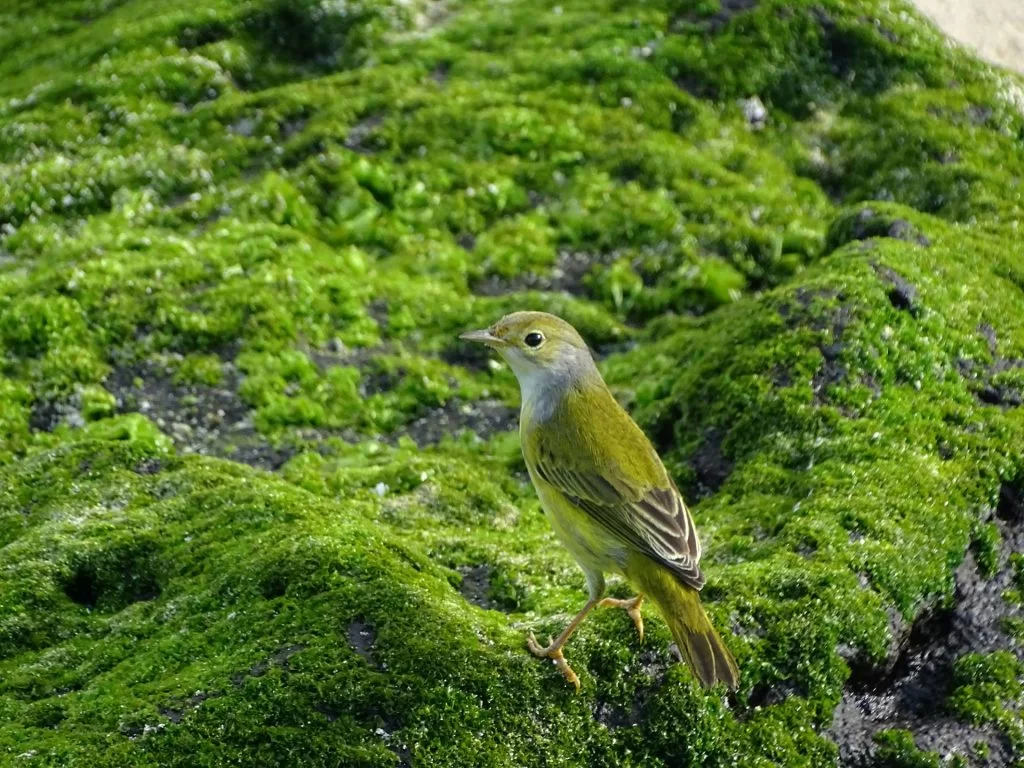
In a year of minimal rainfall, the Yellow Warbler emerges as a beacon of resilience, actively nesting and filling the Galápagos with its melodious tunes, despite the looming threat of the avian vampire fly. ©James Gibbs / Galápagos Conservancy
[/one_second]
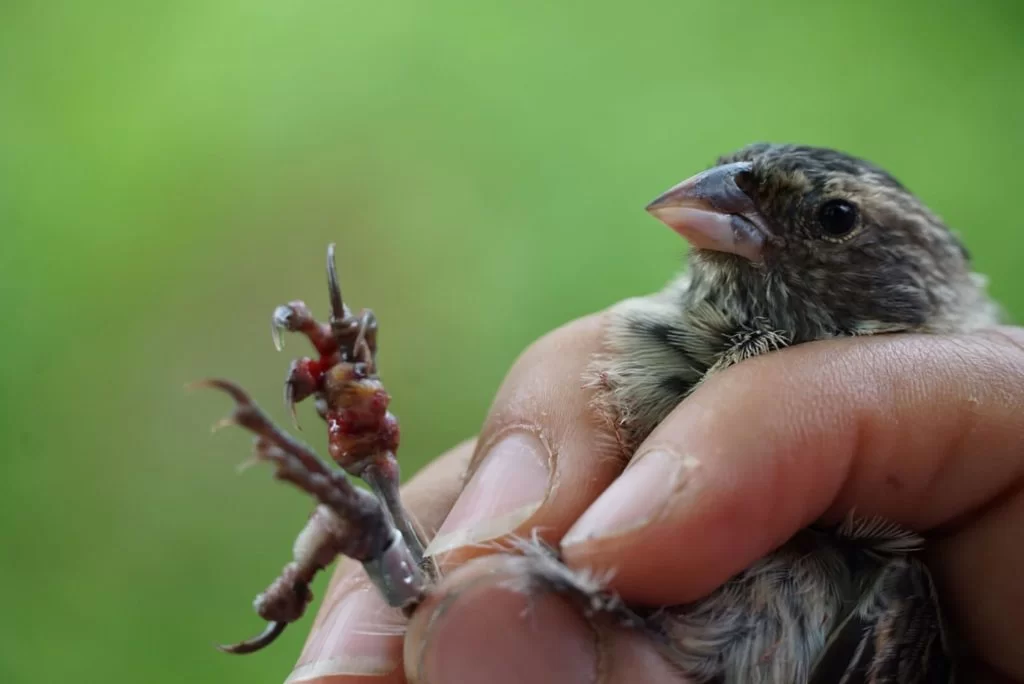
This Darwin Finch, compromised by the avian vampire fly, symbolizes the pressing
threats native species encounter in the Galápagos. ©Carolina Loyola
[one_second]
Background
Three species of Phyllodactylus Geckos — P. According to the IUCN Red List of Threatened Species for 2022, three species of Phyllodactylus geckos — P. According to the IUCN Red List of Threatened Species 2022, P. darwini, P. galapagensis and P. This worrying status highlights the need for more data. The IUCN does not have a status for Phyllodactylus simpsoni or P. P. Data Deficient is the classification for baurii due to the limited amount of information available on its population.
Galapagos Conservancy, in response to this, funded a 2022 study led by Dr. Diego F. Cisneros Heredia, a researcher and professor at the University of San Francisco de Quito. The primary objective of the study was to shed more light on Galapagos’ endemic geckos by combining observations from the field with morphological and physiological analyses as well as genetic analyses. It also investigated the behavior of the locals towards these reptiles. The integration of data is crucial for understanding the impact that climate change will have on these species.
The Study
The study included 548 geckos of which 364 are endemic, and 184 are introduced. One notable observation was that native species are more likely to be found in natural ecosystems while introduced species prefer human settlements. The study revealed that endemic gecko prefer warm microhabitats whereas introduced gecko are more flexible in their movement. The study concludes that endemic species are threatened by introduced species, habitat changes and competition. This highlights the importance of effective conservation and education strategies in order to protect the enigmatic creatures.
Washington Tapia Dr., our General Director, stressed the importance of these findings. “This information will guide us in all that we do.” We not only promote our research but also any study that can provide useful data to protect the iconic Galapagos species.
We are committed to this cause at Galapagos Conservancy. We continue to work with institutions like USFQ and Galapagos National Park Directorate to collect vital information and implement specific measures that will ensure the long-term preservation of Galapagos biodiversity.
[/one_second]
[one_second]
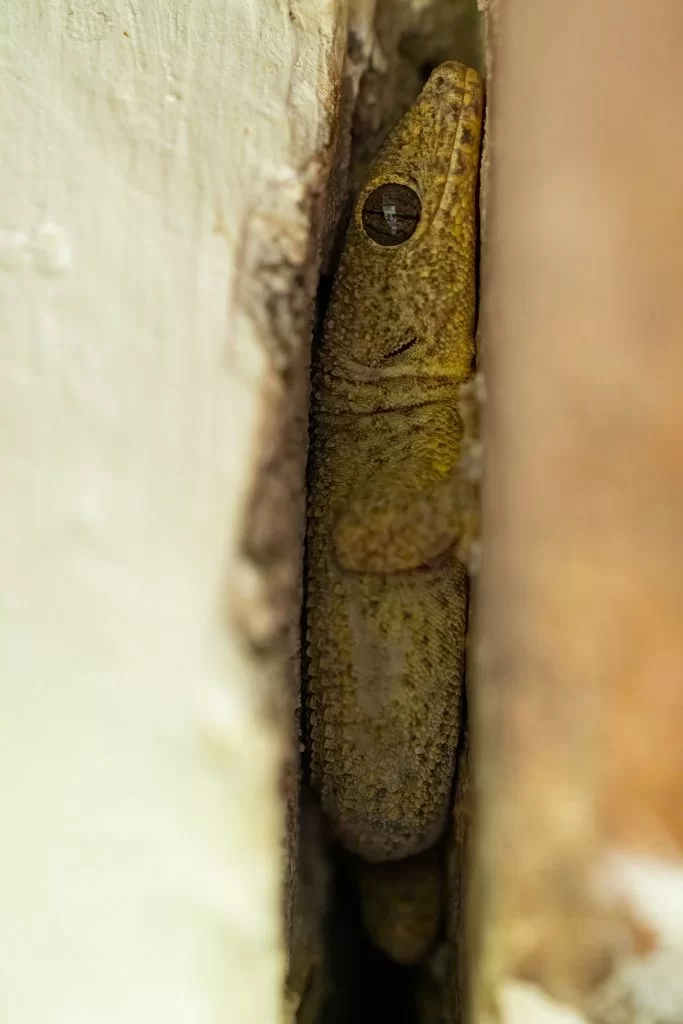
The gecko Phyllodactylus reissii is an introduced species that lives on walls and seeks refuge from predators in dry spaces or among wooden furniture. ©Juan Gallardo / Galápagos Conservancy
[/one_second]
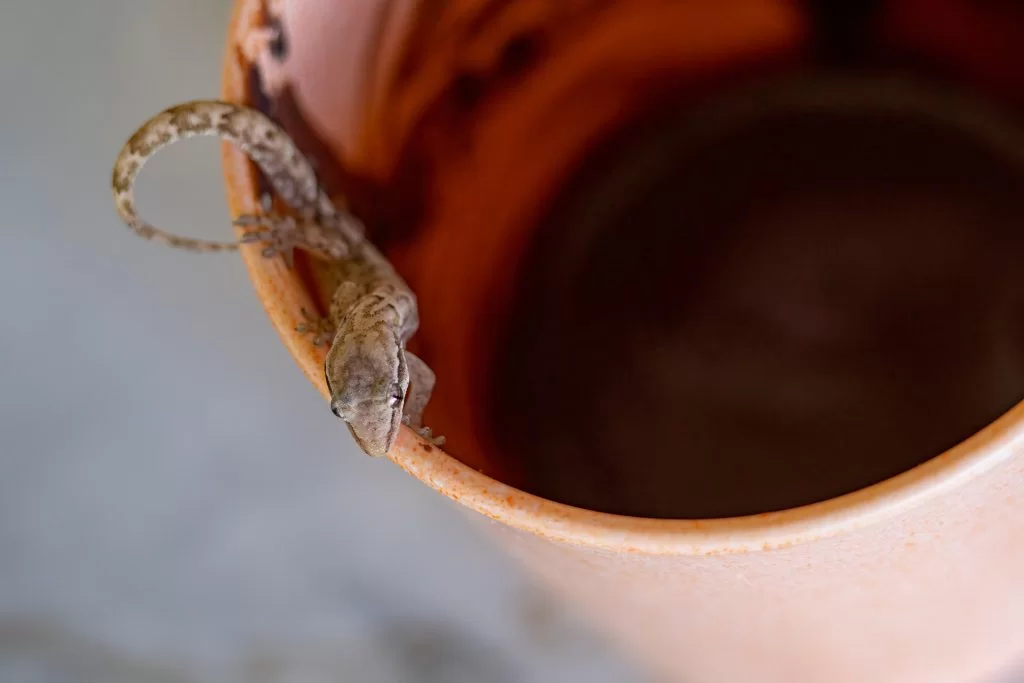
It’s common to find geckos inside homes. However, they feed on processed
products and unwanted insects in the household. ©Juan Gallardo / Galápagos Conservancy
Novarino Casillo: Local Champions Spotlight
Novarino Castillo is an example of this progress. A local farmer, his vision to build a greenhouse was given a boost by Galapagos Conservancy. Novarino Castillo’s farm is nine miles from Puerto Ayora and a great example of responsible agriculture. It produces a variety of organic products, including eggplants, papayas, and more. This project not only supplies the local community with food, but it also does so without damaging natural habitats.
Composting is essential for sustainable agriculture
Novarino’s farming philosophy is based on composting organic waste. Compost is a rich organic fertilizer that improves soil health without chemical additives. Novarino said, “This allows me farm without chemicals and contribute to the care for the Galapagos Islands while offering healthy food to my community.”
Mission and Approach of Galapagos Conservancy
Galapagos Conservancy’s initiatives are guided by our unwavering commitment to ecological conservation and sustainable development in Galapagos. Novarino is one of our active projects that encourages environmentally responsible farming. Promote productive and sustainable farming to ensure a steady supply of fresh foods while protecting fragile ecosystems. Such projects also fuel local economic development and encourage community participation in conservation efforts.
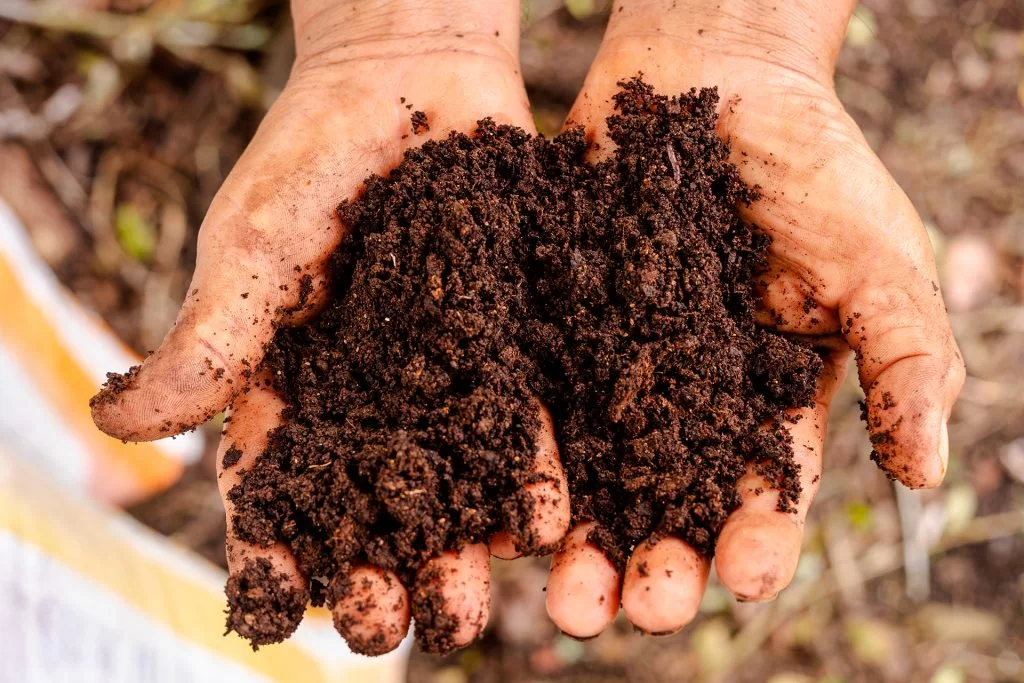
Novarino creates compost from decomposed organic materials, which he uses as organic fertilizer to enrich the soil and improve its fertility. ©Galápagos Conservancy
Community Engagement and Economic Development
Local farmers play a crucial role in the fight for conservation on the Galapagos Islands. Galapagos Conservancy supports citizen-led initiatives to provide sustainable solutions that will benefit the islands’ unique ecosystems and long-term health. We continue to innovate in Galapagos by combining community involvement and collaborative efforts to find ways to balance human activity with environmental responsibility. This blueprint for sustainable living resonates beyond the islands.
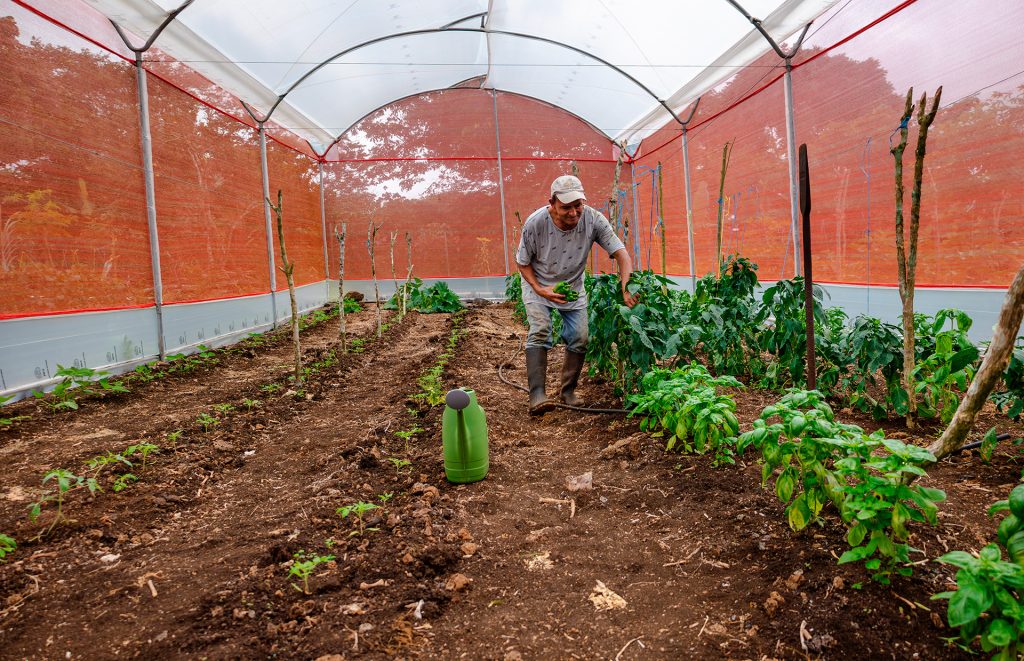
By promoting and strengthening conscious agricultural and livestock practices, we ensure the availability
of fresh food without endangering the delicate ecosystems of the Galápagos. ©Galápagos Conservancy
Youth Leadership and Conservation Inspired by Experiential Learning
Sebastian developed his educational program “Experiential processes for Adolescents & Youth in Galapagos Community” based on two educational initiatives to promote the care of Galapagos Islands.
The first initiative aimed to encourage community leadership in young people by encouraging them to analyze community issues and find solutions that align with United Nations Sustainable Development Goals. The second initiative aimed to use photography as a tool for conservation through workshops, photographic excursions, and educational activities, in collaboration with local scientists and park rangers.
Activities included workshops that focused on SDGs. They also included talks with local stakeholders and visits to agroecological farming operations. The program’s activities included experiential workshops focused on the SDGs, talks with local stakeholders, visits to agroecological farms, monitoring of emblematic species, and ecosystem restoration.
Dr. Jorge Carrion is our Director of Conservation and he commends Sebastian on his leadership in this project, which has motivated the Galapagos Youth to be more engaged with their environment. Jorge Carrion believes that young people such as Sebastian are essential allies for conservation. He is confident that Sebastian’s project can significantly foster community interest in caring for and improving the Galapagos Islands.
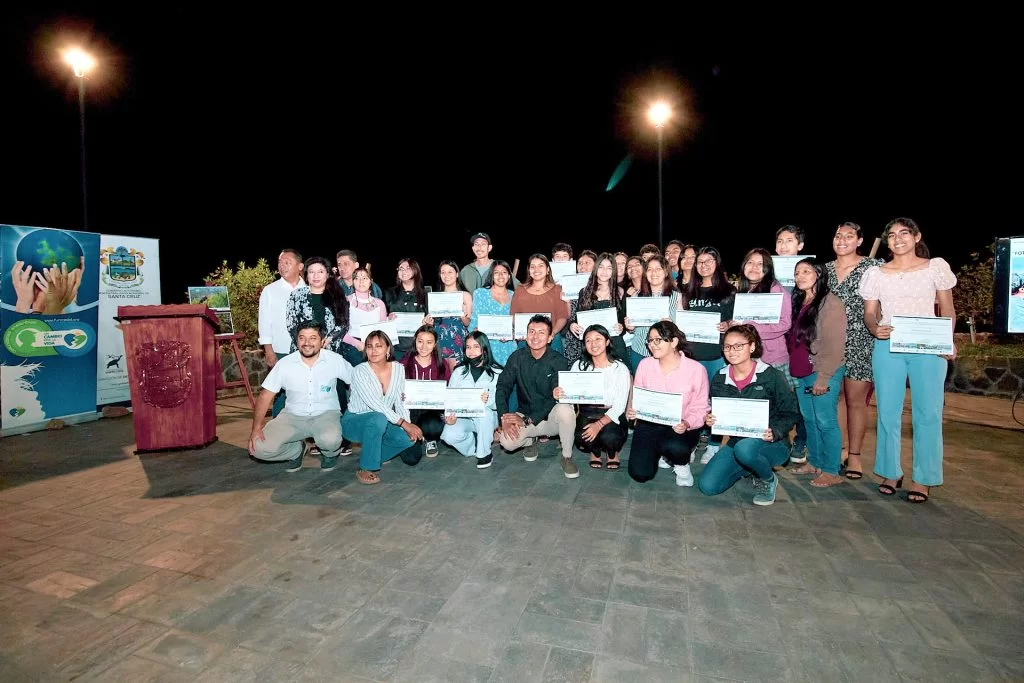
Over 60 youth received hands-on education and learned in an enjoyable manner how to protect their home, the Galápagos Islands © Sebastián Pilla / Galápagos Conservancy
Galapagos Conservancy, in collaboration with the Galapagos National Park Directorate and to celebrate World Turtle Day on May 23rd, is working to protect and conserve Galapagos Giant Tortoises. Both organizations collaborate through the Initiative Galapagos to restore ecosystems and ensure the survival of these fascinating creatures.
The nonprofit American Tortoise Rescue established World Turtle Day in 2000 to promote global awareness of the importance and threats to turtles and tortoises, and to encourage conservation efforts. The IUCN Red List classifies the Galapagos Giant Tortoise as Endangered, Critically Endangered, or Critically Threatened due to a variety of factors.
Washington Tapia is the General Director of Galapagos Conservancy. He pointed out that historically, Galapagos giant tortoises were hunted for their oil and meat, resulting in a dramatic decrease in population. Their vulnerability has been further increased by habitat degradation, invasive species and illegal trafficking. Tapia said that it is important to take immediate measures to protect and preserve these species. This will ensure the maintenance of ecological integrity in the ecosystems where they live and promote greater awareness about their importance to ecosystems.
The Iniciativa Galapagos Program has made significant progress in conserving the Giant Tortoise by restoring the native ecosystems of islands and the Giant Tortoise. Some of the notable achievements are the protection of nesting areas and the optimization of captive breeding programs.
Galapagos Conservancy takes pride in focusing its conservation efforts to these majestic creatures across the Archipelago, and being part of one the most successful restoration program around the world. Iniciativa Galápagos shows how public-private collaboration can have a positive impact on the conservation of threatened species. Tapia said that “our commitment” is to protect and preserve these amazing reptiles every day.
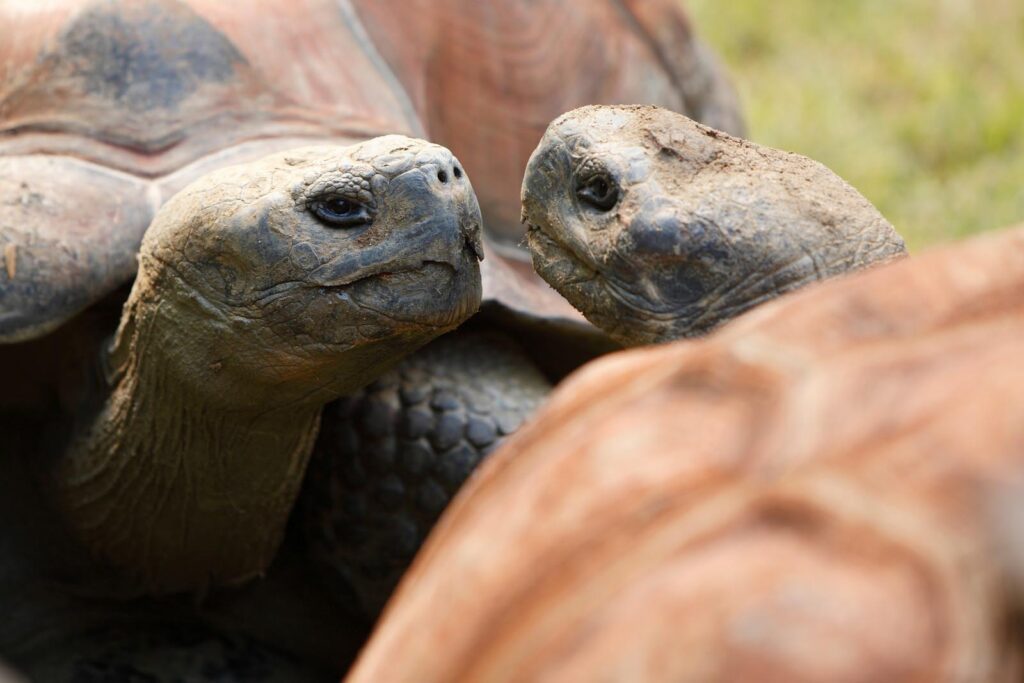
A man who is vital to the success and conservation of expeditions in the Galapagos Islands is often overlooked. Novarino Castillo is a Galapagos Conservancy porter.
Castillo’s team carries vital supplies on the field for scientists and park rangers who are going to remote parts of the Islands. The supplies include food and water, medicines, and essential tools such as machetes and files. It may appear easy, but transporting these supplies across volcanic and rocky terrain is a difficult task.
Imagine walking under a scorching sun for hours, carrying a heavy load and navigating steep and rugged trails. Castillo’s team works tirelessly, from dawn until dusk. Castillo and his team start their day at 5 a.m. Castillo spends up to fourteen hours traveling to eat and then to meet the expedition groups. He completes numerous round trips, completing every task with meticulousness, and even makes multiple rounds. Castillo’s unwavering dedication and perseverance are essential in ensuring the camps have everything they need.
The Galapagos camps are important locations for studies, monitoring and conservation efforts. Castillo’s team is essential to the success of these trips, as they provide optimal conditions for scientists and park rangers to do their work. It would be difficult to maintain ecosystem integrity and conduct comprehensive research without their logistical support.
Castillo is proud of his contribution to the conservation of species, and especially that of the Galapagos Giant Tortoises. Castillo’s contribution is vital for the survival of these animals, and the Galapagos Islands unique biodiversity.
Castillo, our team of porters and the Galapagos Conservancy wish to acknowledge and applaud their tireless efforts. These unsung heroes are silent but steadfast, and they leave a lasting impression on the protection of this magical Island. Our porters make these conservation trips possible and protect the natural wonders that we treasure.
